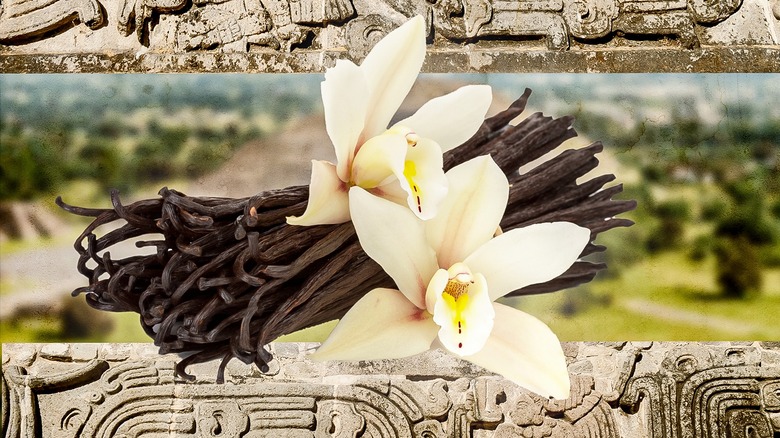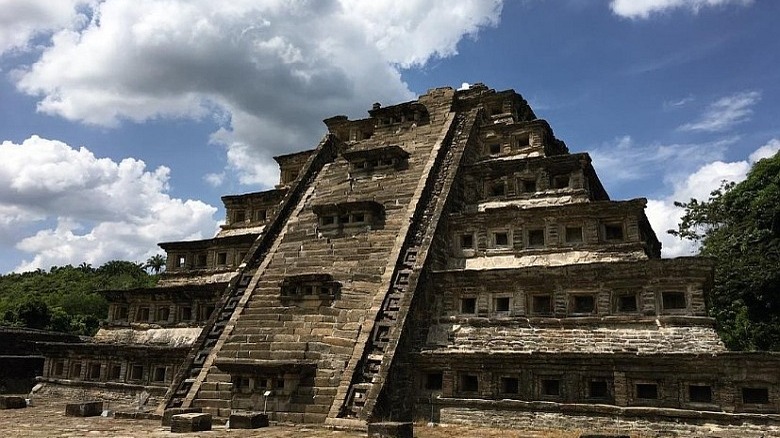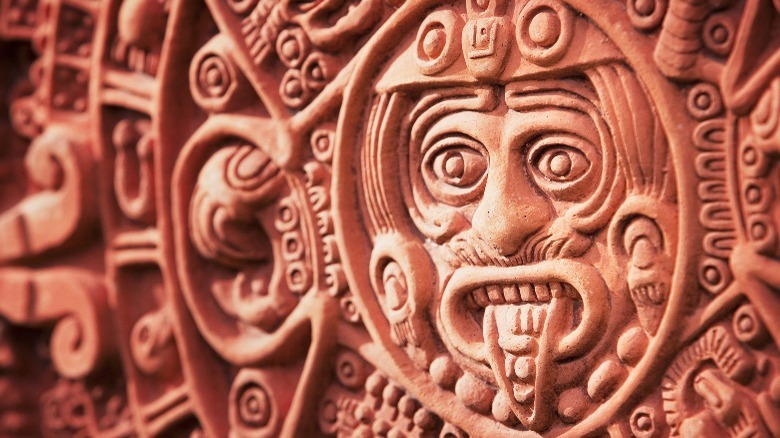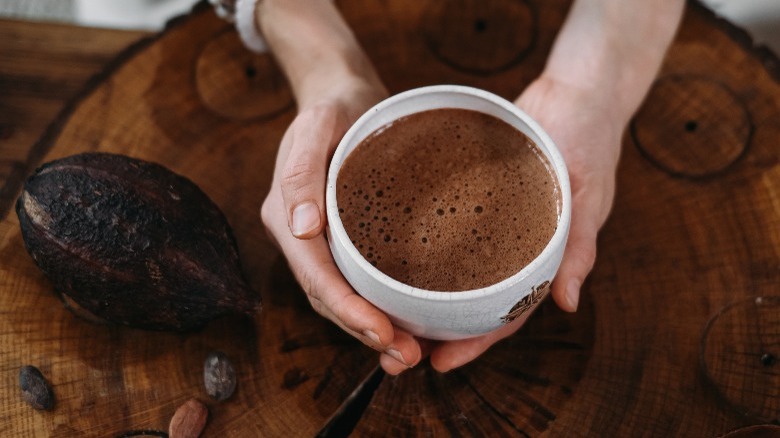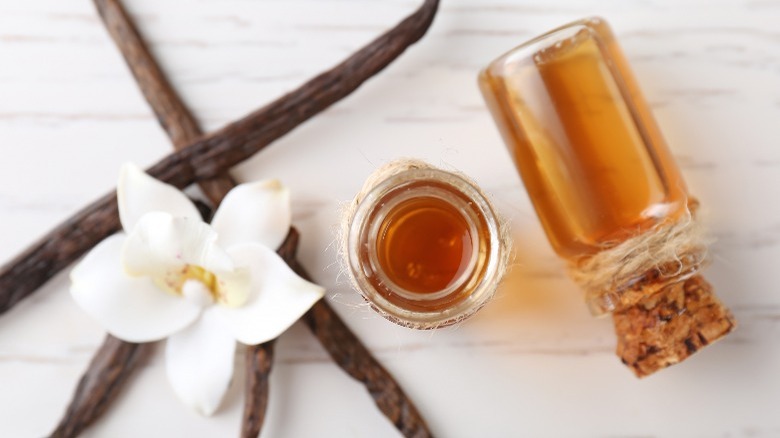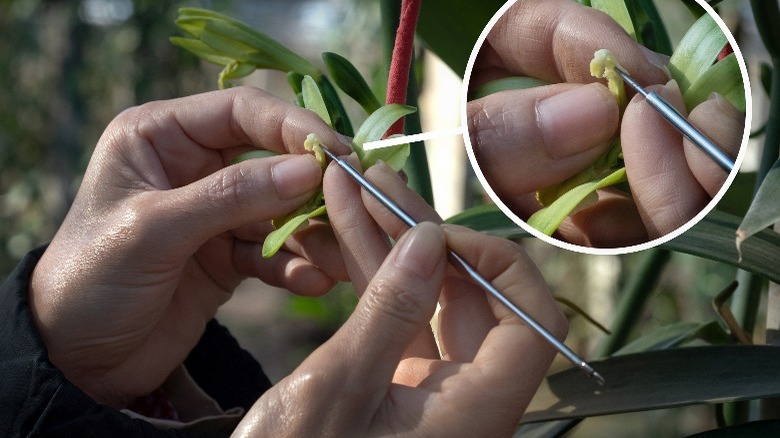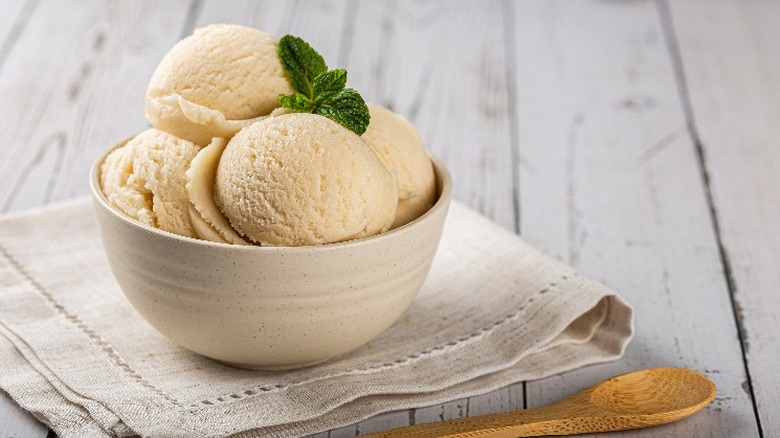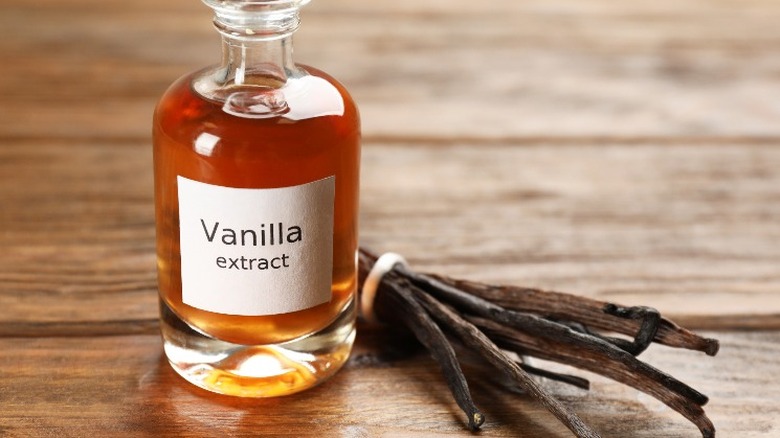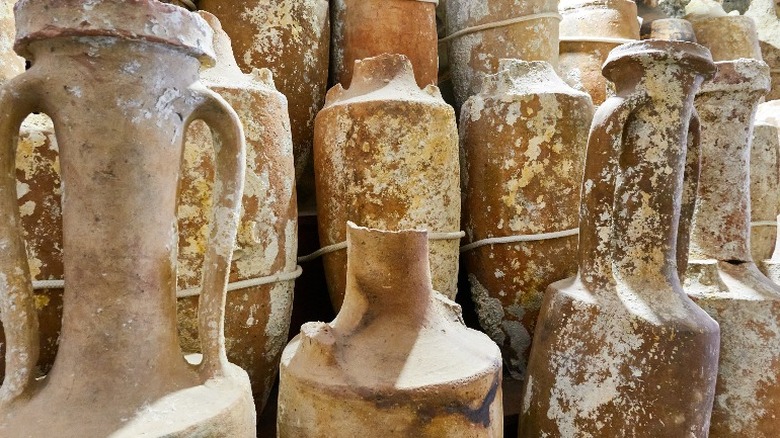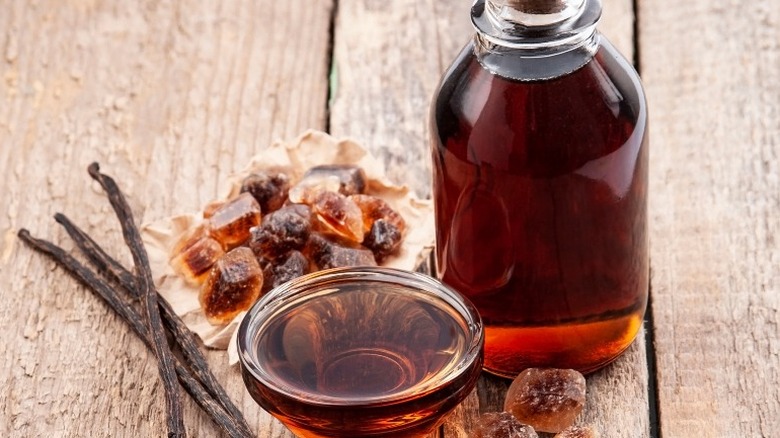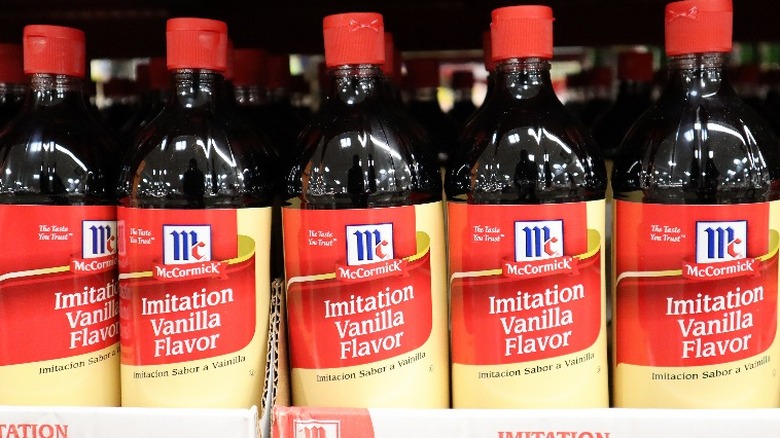The Contentious, Ancient Origins Of Vanilla
Vanilla is the world's second-most expensive spice and comes from the vanilla planifolia plant, a member of the orchid family. Though there are over 25,000 species of orchid, vanilla is the only one that's used agriculturally.
Many people use the word vanilla to mean plain or boring, and vanilla ice cream is often thought of as the least exciting flavor of ice cream. However, it's anything but — vanilla packs over 200 different flavor compounds and tastes surprisingly complex.
But where does vanilla come from, who first discovered it, and what was it once used for? We dive deep into the rich and contentious history of this amazing spice, from its roots with the Totonacs of ancient Mexico to its journey to Europe and the 12-year-old boy who discovered how to pollinate the plant by hand.
Our journey takes us from the Mexican mountains to the islands of Madagascar and Réunion, on to Europe and the U.S. Along the way, we'll discover everything from tasty vanilla ice cream to rich vanilla-flavored hot chocolate and perfume made with vanilla pods to vanilla-scented tobacco. One thing is for sure: You'll never look at vanilla in the same way again.
A rich history: The Totonacs and the birth of vanilla
Many believe the Aztecs discovered vanilla, but its history is actually much older. A tribe called the Totonacs, who lived in the Mexican mountains in the 15th century, grew vanilla planifolia for medicinal or religious purposes. It wasn't often used by the Totonacs as a flavoring.
According to ancient Totonac lore, a deity and her forbidden mortal lover were killed by her angry father, who disapproved of their union. It's from this deity's blood that the vanilla orchids are said to have sprouted.
There are some reports that show vanilla being used even earlier by the Mayans, who used the plant in cacao drinks with other spices. One thing we do know is that the Aztecs certainly weren't the first to discover vanilla, and they were probably not the first people on the planet to use it as a flavoring.
The Aztecs conquer the Totonacs
When the nomadic Native American Aztecs conquered the Totonacs in 1427, they taxed the tribe for vanilla beans, discovering that the beans could be used for their delicious flavor. It was also the Aztecs who first discovered the plant's aphrodisiac qualities.
The Aztecs referred to vanilla as the black flower, as the plant's flowers turn black after they are harvested. One of the reasons many assume the Aztecs discovered vanilla is that it's thought they were the first tribe to combine the spice with cacao to make xocolatl or chocolatl, the drink we know as modern-day hot chocolate, though the Mayans may have actually done this before them.
Though chocolatl was a well-kept secret in the tribe, it wouldn't always be that way. Before long, the Spanish would come to Mexico and take the secrets of chocolatl back to Europe with them, ensuring that both vanilla and hot chocolate's popularity spread across the globe.
The Spanish steal Chocolatl from the Aztecs
When Spanish conquistador Hernán Cortés and his men first landed in Mexico on November 8, 1519, they were greeted by the Aztec Emperor Montezuma. They weren't there with peaceful intentions, yet Montezuma served Cortés a hot goblet of chocolatl during a religious ceremony in what is today Mexico City.
The story goes that Cortés was so impressed by the drink, he asked what was responsible for its unique flavor. Montezuma shared the secrets of the vanilla flavoring, and Cortés took the recipe, along with a supply of vanilla pods, back to Europe so the Spanish king could savor the drink for himself.
In reality, things weren't quite so peaceful. The Spanish conquest of the Aztecs lasted from 1519 to 1521. Though the popular story is that Montezuma surrendered his empire to the Spanish and was later killed by friendly fire, there's also a story that called this period the Spanish-Aztec war, claiming that the Aztecs were only defeated due to a betrayal from within their ranks and a smallpox outbreak.
Though we may never know what really happened, we do know that Cortés is the man responsible for bringing vanilla — and hot chocolate — to Europe. It wasn't as straightforward as that, though.
An ingenious apothecary diversifies vanilla
Though vanilla had spread to Europe, it was still generally used as a flavoring rather than for other purposes. Enter Hugh Morgan, apothecary to Queen Elizabeth of Great Britain.
When Morgan introduced vanilla to Queen Elizabeth in 1602, rumor has it she became obsessed with its heady scent and delicious flavor. It's said that the Queen had a sweet tooth, insisting the spice was used in every pudding she was served.
Morgan is often credited with introducing vanilla to Great Britain. He saw the value of using vanilla alone, and it soon became used in a range of products, from tobacco imported to Europe from the U.S. to alcohol and perfume. It was also used medically as a nerve stimulant and aphrodisiac.
By the late 18th century, vanilla was widely popular amongst royalty and the wealthy. This popularity soon spread to the U.S. after Thomas Jefferson tasted the spice during a trip to France.
Vanilla's journey wasn't all smooth sailing
Over the next 300 years, Mexican vanilla was transported worldwide, but for some reason, the plants refused to grow vanilla pods, though they bloomed beautifully. Because vanilla is a hermaphroditic plant, meaning it has both male and female parts that are separated to prevent self-pollination, it wasn't initially clear how the plant was pollinated.
It wasn't until 1836 that Charles François Antoine Morren, a French botanist, observed tiny Melipona bees pollinating the flowers. Later, on the island of Bourbon, modern-day Réunion, a 12-year-old boy called Edmond Albius, who had grown up working as a slave on an island plantation, discovered a method for fertilizing the flower by hand.
Sharing his technique with his master, Ferréol Bellier-Beaumont led to the hand-pollination method spreading throughout the neighboring islands and later the world. Réunion soon became the world's largest producer of vanilla, transporting 200 tonnes of beans to France by the late 19th century.
Today, we still use these hand-pollination techniques. In fact, almost every vanilla bean produced is a result of hand-pollination, making vanilla one of the world's most labor-intensive crops. That's why vanilla pods, and extract, are so expensive. Nowadays, over 70% of the world's vanilla is still produced in Madagascar and Réunion, known as Bourbon vanilla.
Thomas Jefferson brings vanilla to the U.S.
Earlier, we mentioned Thomas Jefferson, and it's thought that he was responsible for bringing vanilla to the U.S. Before becoming the U.S. president, Jefferson was a minister to France. It's said that during a trip to the country, he discovered vanilla ice cream.
Returning to the U.S. in 1789, Jefferson ordered some vanilla pods to be sent from Paris. Though ice cream was already popular in the U.S., he created and wrote down one of the world's first recipes for vanilla ice cream.
Today, the recipe is preserved in the Library of Congress in Washington's Capitol Hill area. Using egg yolks, sugar, and cream, it's similar to how we still make vanilla ice cream today.
Love it or find it too plain, vanilla may be one of the most popular ice cream flavors in your state today. You may prefer chocolate, strawberry, or another flavor, but vanilla ice cream remains a classic choice.
Vanilla's U.S. popularity grows
Though its price meant it was once reserved exclusively for royalty and the wealthy elite, the price of vanilla slowly began to decline, making it more affordable and accessible to the masses. Demand for vanilla spread across the U.S. during the 18th century.
In 1847, Joseph Burnett, a pharmacist from Boston, steeped vanilla beans in water and grain alcohol, creating vanilla extract or essence. Burnett became known for the purity and quality of his vanilla extract, creating the Joseph Burnett Company of Boston that same year, focusing exclusively on producing flavoring extracts. Prior to his creation, Burnett was also responsible for manufacturing the anesthetic used in the first surgical procedure under anesthesia in the US, performed at Massachusetts General Hospital in 1846.
The creation of vanilla extract meant that by the late 19th century, vanilla had become an important ingredient in many popular recipes, from ice cream to cakes and pudding. In fact, vanilla ice cream accounted for 80% of all ice cream in the U.S. by 1932. Vanilla was also used in the creation of cream soda in the 1870s.
Modern-day evidence reveals vanilla's earlier spread to Europe
Though it was initially thought that vanilla didn't reach the Eastern side of the Atlantic until the Spanish brought it there, evidence discovered in 2019 says otherwise. This evidence revealed that vanilla was actually used in Israel many, many years earlier.
At an excavation site in Tel Meggido, Israel, earthenware jars dating back to the Middle Bronze Age, around 1650-1550 B.C., were discovered by a team of scientists who published their findings in the Journal of Archaeological Science Reports. Traces of vanilla were found in these jars, thought to have been poured into the jars as an offering to the gods.
However, later research revealed vanilla wasn't commonly used for funeral offerings but was instead added to the wine. It's thought that the people of the region discovered the spice's flavor-enhancing qualities, though vanilla was highly coveted at this time, imported from India or East Africa and likely reserved for use by royalty. Before these jars were discovered, there was no evidence to suggest vanilla had made it to the Eastern side of the Atlantic at this time.
Vanilla as we know it today
Vanilla is no longer reserved for the elite, though it is still the world's second-most expensive spice due to the labor-intensive process required to pollinate and harvest it. Nowadays, America is the world's largest importer of vanilla.
There are several main variations of vanilla around today: Tahitian, Bourbon, Mexican, and Indonesian. Each variety has its own scent and flavor characteristics.
Bourbon Vanilla is the most common type of vanilla. It comes from the islands of Madagascar and Réunion, taking its name from Réunion's former name, Bourbon. These vanilla beans pack lots of vanillin for a rich, creamy vanilla flavor.
You might also hear people talk of French vanilla. Rather than being a type of vanilla bean, this actually refers to a method of making vanilla ice cream popular in France, using egg yolks for a rich, custardy base.
The rise of artificial vanilla and its environmental costs
How do you know whether you're enjoying real vanilla or artificial vanilla flavoring when, according to Scientific American, "less than 1% of vanilla flavor comes from actual vanilla orchids." Since many vanilla varieties don't hold up well to heat, affecting the flavor, it can be hard to distinguish between the real thing and imitation vanilla.
Scientists can make vanillin, the compound that gives vanilla its distinctive flavor, from ingredients such as lignin from plants and wood pulp, and eugenol, found in clove oil. However, real vanilla packs different flavor characteristics depending on where in the world it originates, while artificial vanilla has one standard flavor and aroma.
If you're using real vanilla extract, you'll notice it has a deep color and is thick and syrupy, with flecks of vanilla bean seed in the liquid. The fake stuff is lighter and more fluid, and you won't see these bean particles.
Catastrophic weather events such as storms, cyclones, and tsunamis affect vanilla harvests, pushing the price of vanilla up, which means a rise in the popularity of artificial vanilla. This rise in demand is bad news for the environment, though, producing wastewater that requires treatment.
